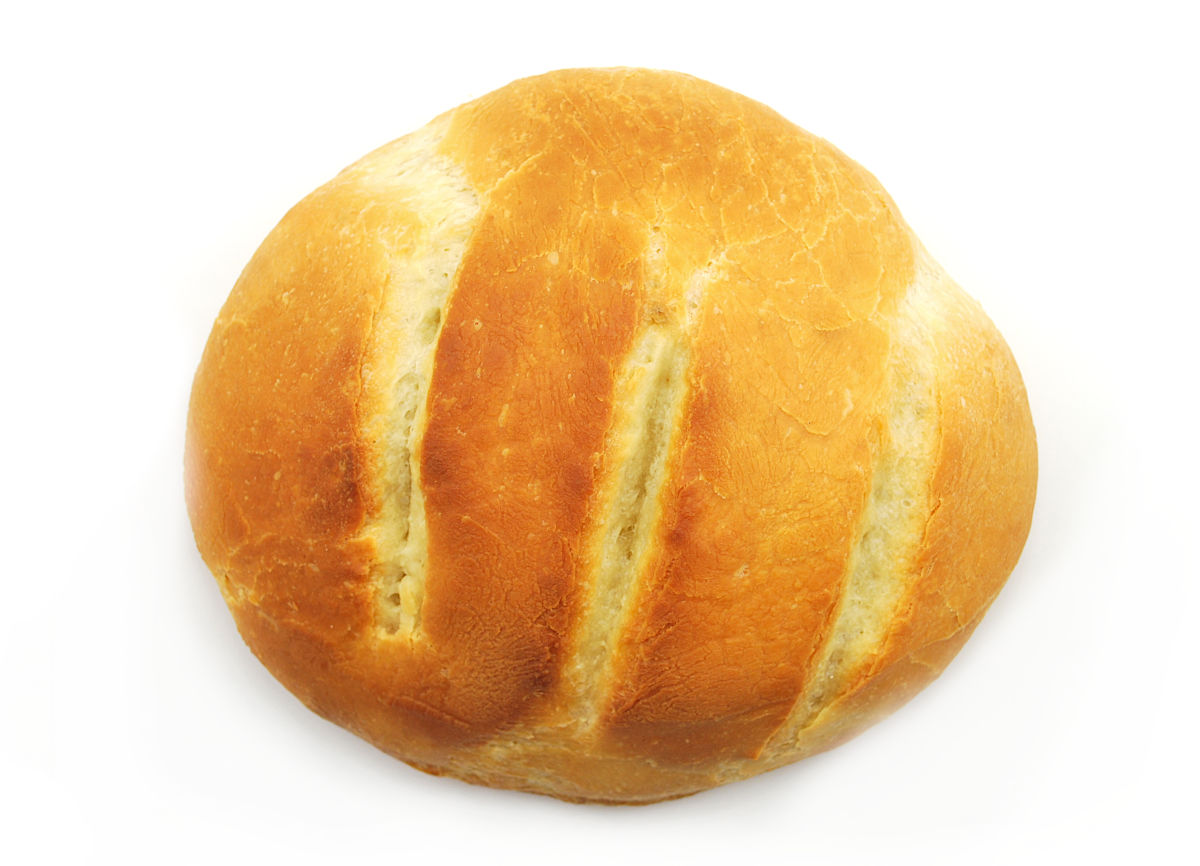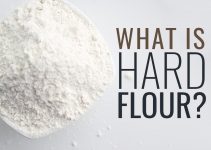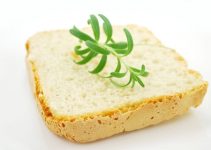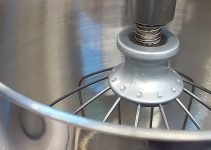
Finding the best bread cloche can absolutely transform the experience of baking breads at home. If you have the budget for it, I totally recommend giving it a try.
I love the Lodge Combo Cooker Cast Iron. Even if it’s not the classic bread cloche, it’s still the best and most affordable choice you could make. But I will also review other recommendations, just in case you’re looking for the classic cloche or other alternatives.
Contents
Best Bread Cloche: My Favorite Picks
1. Overall Best: Lodge Combo Cooker Cast Iron
You can use the 10.25-inch shallow skillet to bake the bread in and use the 3.2 quart Dutch oven as the dome to create the steam and imitate the conditions created in a professional baker’s oven. This combo cooker cast iron is not the classic bread cloche that you might expect but it’s cheap and it works perfectly. Plus, you get a 3.2 quart Dutch oven that you can cook everything you want in. It’s perfect for 5 cups of flour, and overall the best bread cloche that you could get.
2. Classic Bread Cloche: Emile Henry
Emile Henry is a manufacturer that makes their classic bread cloches in France. It has the classic design: a base with low margins so the dough can be transferred without burning ourselves and a very tall dome to create the needed steam for perfect crumb, crust, and deep flavors. It’s made of ceramic, which is a material that withstands extreme temperatures without any damage. It can be preheated empty with the dome on without risk of cracking.
3. Cheap Alternative: Lodge Cast Iron Double Dutch Oven
This is a 5 quart pot with a lid, made of cast iron, that can be used to make all sorts of recipes, like stews, soups, casseroles, meats, etc. And it can also be preheated empty in the oven with the lid on in preparation for baking an absolutely delicious loaf. The lid doubles as a 10 inch cast iron skillet that can be even be used for making pizza on the stovetop. The versatility is without match. And so is the affordable price.
Best Bread Cloche Reviews
What makes a bread cloche so awesome?
The major advantage this type of bakeware offers is that it can take things to professional levels. We can bake loaves that are compared in taste, crust, and crumb to what bakeries are capable of baking. Only that we’ll do that in our non-professional kitchen.
Moreover, a bread cloche can also serve as a perfectly fancy gift for bread bakers.
The other bakeware that can help us imitate the conditions of a professional bakery is a Dutch oven for bread. There are a few differences between a cloche and a Dutch oven. I’ll make a comparison between the two, a bit later on.
We’ll first review the original bread cloche, which is manufactured by Emile Henry. These are made in France and they have the classic low base with a very tall dome.
However, I’ll also introduce other models, including a Lodge cast iron Dutch oven, which is a very cheap alternative to the cloche. The loaves baked are of the same quality and that’s what matters. Plus, you can use a Dutch oven to cook so many dishes. It’s capable of so much more than baking bread.
1. Lodge Combo Cooker Cast Iron: Best Bread Cloche
I love this combo cooker cast iron. The price is great and the versatility is pretty much unbeatable.
We get two cooking and baking tools:
- 10.25 -inch shallow skillet with handle
- 3.2 quart Dutch oven with the same handle
Bake loaves in a 10.25 -inch shallow skillet
I came across this combo while reading the amazing cookbook Tartine Bread by Robertson Chad.
When I saw how the author and baker uses this Lodge Combo Cooker Cast Iron, I immediately recognized that this is the perfect non-conventional bread cloche that could find a place in any kitchen.
The author uses a Dutch oven to bake sourdough bread but not the way you might expect it to happen.
Basically, we transfer the dough into the skillet and put on top of the 3.2 quart pot to act as a dome. The result is pure baking perfection. You’ll be absolutely amazed with the loaves it bakes, whether you back sourdough, artisan loaves, no-knead loaves, etc.
The skillet will fit dough made from 5 cups (600g) of flour.
If you want a bigger size, a pot that will fit a dough made with 8 cups (1000g) of flour, I recommend checking out the other Lodge product on this list.
Preheat it empty
Before baking, you should preheat the skillet with the pot on top. Preheat them at 500 degrees Fahrenheit for 20 minutes.
Once the preheating is done and your dough is done proofing, you can transfer the dough into the skillet. Meanwhile, leave the pot in the oven to keep it hot.
Before transferring the dough, cut a round parchment paper. It will make the removal of the loaf effortless. Parchment paper is perfect.
The skillet is hot but there’s no risk of burns because this is a 10.25 -inch shallow skillet. It doesn’t have tall sides.
Once the dough is inside the skillet, get the pot from the oven and place it on top.
Bake like that, at 450 degrees Fahrenheit, for 20 minutes. This is the part where the dough gets steamed and rises as nothing you’ve seen before.
Remove the dome and bake for another 20-25 minutes at 450 degrees Fahrenheit or until you get the crust color that you prefer.
2. Emile Henry: Traditional Bread Cloche
Emile Henry is the most famous manufacturer when it comes to searching for the best bread cloche. It has the classic cloche models. They might be expensive but if you want the best, check this one out.
This bread cloche from Emile Henry is quite big, too. You can bake 2 – 2.5 pounds loaves. That’s a nice size, even if you’re baking for larger families.
The quality is top-notch and the whole thing looks amazing. It’s also made in France.
The advantages of baking loaves in a cloche
The advantage of using this kind of bakeware is that the base is extremely low. Transferring the dough for baking in the preheated cloche will go down effortlessly. There’s no risk of burning by touching the very hot sides.
It’s made of ceramic, a material that withstands extreme temperatures without any damage. As the manufacturer tells us, it can be taken directly from the freezer to the hot oven. It withstands temperatures up to 500 degrees F (260 degrees Celsius).
That comes in handy because you have to preheat it empty with the dome on before transferring the dough for the baking.
It should be preheated empty with the dome on for 20 minutes at 450 degrees F (230 degrees C).
Emile Henry actually describes it as innovative refractory ceramic, which will lead to baking loaves with nice thick crusts and firm light crumb.
Emile Henry promote this bakeware as gaining the quality of a bread oven thanks to the fact that the lid traps the steam to create an environment similar to a stem-injected oven.
A recipe book is also included and there are plenty of recipes on their website. You can also use the recipes featured in books about bread because a large majority of recipes can be adapted to baking in a bread cloche.
3. Lodge Cast Iron Dutch Oven 5 Quart: Perfect Bread Cloche Substitute
If you’re just interested in finding the best bread cloche, just focus on what I recommended above.
However, if you want a cheaper substitute, check out this Lodge Cast Iron Dutch Oven, 5 quart.
I think you can be surprised in a very good way. It’s always nice to talk about the complex world of bread baking methods. This is a good opportunity and I’m going to grab it with both hands.
Versatile & durable
The Lodge Cast Iron Dutch Oven is just so great, so versatile, so durable. Those are a lot of attributes that can win over a lot of people or at the very least make them quite curious.
First of all, this Dutch oven is made of cast iron, which makes it very durable.
It can also be preheated empty with the lid on without a risk of cracking. Not the same assurances can be offered to other Dutch ovens that are made of enamel.
It can be used for making absolutely all kinds of recipes from breads to stews to stakes. This is the kind of model for which Dutch oven cookbooks are perfect for.
The 5 quart is size is just really nice, too. Not incredibly big but still big enough for small and large families alike.
The other impressive feature is that the lid can be used as a 10 inch cast iron skillet. It doesn’t get any better than this.
The whole pot, including the lid, can be used in the oven, on the stove, on the grill or over a campfire.
Given all that, don’t you think that the Lodge Cast Iron Dutch Oven 5 Quart can be the perfect bread cloche substitute?
4. Lekue Silicone Bread Maker
This is another very interesting alternative to the classic bread cloche. It’s so intriguing and you’ll soon see why I say that.
It works for baking smaller loaves, about 1 pound of dough. I see this Lekue as perfect for single people or for those cooking for two.
Malleable silicone
First of all, the price is unbelievably cheap. It’s not much more expensive than a loaf pan but it offers a completely different baking method.
It’s made of 100% platinum silicone to withstand high temperatures of up to 428 degrees F (220 C). The fact that it’s made of silicone is what makes it so intriguing.
You can actually mold this silicone bread maker to obtain different shapes for the loaves that you bake. You can bake a boule or a baguette or something in between.
Even if it’s made of silicone, it doesn’t mean that it doesn’t bake absolutely delicious loaves.
That’s because it uses the same principles of using steam during the baking. The Lekue is shaped as a partially closed bowl, which allows the steam to circulate inside. It will prevent the loaf from drying out.
Furthermore, the openings in the sides, will bake loaves with a crusty, golden texture.
The results rival the loaves baked in a Dutch oven or a bread cloche. That’s what makes it so interesting.
Moreover, it also comes with easy recipes to get accustomed to using it.
5. Emile Henry Bread Pot/Potato Pot
Another very interesting alternative to a cloche comes from the same manufacturer, Emile Henry.
This time we have a pot that can be described as the perfect hybrid between a cloche and a Dutch oven.
It has a taller base, like a pot. But it doesn’t have the same flat lid. The lid is actually a second base and it creates the needed steam for exceptional baking.
This combination leads to a unique, spherical pot that is shaped perfectly for artisan breads and for making extra-crispy potatoes.
The pot can even be flipped while cooking for extra-crispy potatoes. It can be flipped because the base and the dome are identical.
It’s made from Flame ceramic. It’s highly resistant. You can use it on the stovetop, on the grill or in the oven.
The ceramic has a glaze that makes it resistant to scratches but it also makes it nonstick. You don’t need to use parchment paper or to sprinkle flour unless you want to. Even when the dough is baked directly on the surface, it won’t stick.
Moreover, and this is very important, it can be preheated empty without any risk of cracking.
Is it absolutely amazing? It is, no doubt about that whatsoever. You might bake the best loaves that you’ve ever tasted. But that capability doesn’t come cheap. Just like the above cloche from Emile Henry, their bread/potato pot is expensive.
If someone where to make me choose between the best bread cloche that I reviewed above and this pot, I would be in an impasse. I just love them both equally.
How to Bake in a Bread Cloche
The first thing you must do is to preheat it empty with the dome on for 20 minutes at 450 degrees F.
Once it’s completely preheated, the base and the dome are very hot so handle them with a good pair of gloves.
I recommend placing the dough on parchment paper and then sliding it on to the base of the cloche. It’s the easiest method. It will also save you from cleaning the cloche once your loaf is baked.
If you don’t have parchment paper, you’ll have to dust the base with flour in order to prevent the dough from sticking to the ceramic. If you don’t use anything between the dough and the base, it will stick and it will be horrible to clean.
Once you have the dough inside, put the dome on top. Bake it with the dome on for 30 minutes.
After 30 minutes, remove the dome and bake the loaf for 5-10 minutes more or until the bread is brown or a deep caramel color.
Place the bread on a cooling rack to cool down, without the parchment paper.
To get that perfect round loaf (boule), you can proof the dough in a proofing basket.
Cloche vs Dutch oven
A bread cloche is specifically created for baking the bread in a humid environment in the early baking process. It creates an environment similar to a steam-injected oven, that’s its magic.
This special environment leads to perfect crispy crusts and perfect chewy crumbs.
If I describe it like that, those of you who have some notions on the different methods of baking breads, can easily understand that a Dutch oven functions on the same principles. That’s what these two bakeware have in common.
What is a bread cloche?
The classic bread cloche has a small base, small in the meaning that it’s not tall at all.
The dome is very tall, it’s bell shaped.
Since the base is not tall at all, the loaf needs space to expand during the baking process and that’s why the dome is so tall.
That’s the classic bread cloche look.
Moreover, the traditional cloche is made from ceramic. Ceramic is the perfect material for handling extreme temperatures, it can be preheated empty with the lid on without risk of cracking.
What is a Dutch oven?
On the other hand, a Dutch oven is literally a pot.
It has a very large base and a classic flat lid with a handle. The Dutch oven is an incredibly versatile pot, absolutely awesome for bread baking and not only.
When looking for the best bread cloche, you’ll notice that this bakeware is not exactly cheap either. It can be totally worth it, there’s not doubt about that. But is a Dutch oven with its impressive versatility a better choice in the end?
As I said, buying a cloche will elevate your baking to professional levels. It’s a total game changer. But so is buying the best Dutch oven for bread. If you want to know just how versatile Dutch ovens are, check out this post on Dutch oven cookbooks.
Bread Cloche FAQs
To better understand the notion of baking in a cloche, let’s see which are the most important questions about this bakeware.
1. Do you preheat a bread cloche?
Yes, the cloche should be preheated for 20 minutes at 450 degrees Fahrenheit. It’s always preheated with the dome on.
2. How do you keep bread from sticking to cloche?
The easiest method is to bake on parchment paper. Otherwise, use flour to prevent the dough from sticking to the base.
3. Is a bread cloche better than a Dutch oven?
A cloche can be awesome for baking breads and it’s very easy to use. But if you want a bakeware that offers the versatility of baking breads and cooking a vast array of dishes, then you’ll prefer a Dutch oven.
4. Is Emile Henry good for sourdough?
As the manufacturer of the classic best bread cloche, Emile Henry can be used for baking absolutely all kinds of breads, sourdough included.




